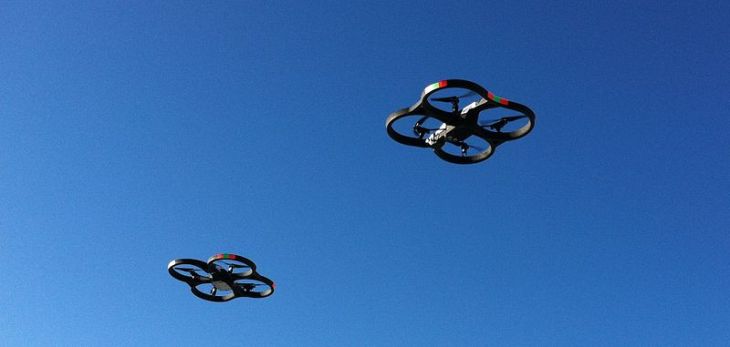Searching for a new home in a different city is hard, especially if you want a sense of the neighborhood and a true picture of what prospective properties look like. Wouldn’t it be great to have a close-up view of that seemingly perfect house on the market from all angles, as well as a bird’s-eye view of the yard? Good news: Drones are making that possible.
This is just the tip of the iceberg when it comes to the amazing potential of these flying robots (or, as industry folks like to call them, unmanned aircraft systems [UAS]). With drones, a groom can get the perfect group shot of his wedding party; a coach can closely monitor the progress of their athlete as she races a marathon; emergency responders can survey larger swaths of territory during disaster relief efforts; and a farmer can monitor crops in a remote corner of their land.
Drones, much like smartphones and tablets before them, have the potential to revolutionize our lives in many ways. However, as with any new technology, some people have concerns. In the case of drone technology, one we hear often is the possible invasion of privacy.
That’s why stakeholders from the UAS industry, civil liberties organizations and government agencies have been working together to help facilitate the safe, responsible and ethical use of drones, while still supporting the growth and development of this cutting-edge technology.
In February 2015, President Obama directed the National Telecommunications and Information Administration to convene a multi-stakeholder process to develop a set of best practices for privacy, accountability and transparency regarding both commercial and recreational UAS use. In other words, create guidelines for “neighborly” drone use. Together, we have worked to do just that.
We can all agree that privacy must be protected without stunting the growth of the still-nascent UAS industry.
After months of discussions, this collaborative process resulted in a consensus set of voluntary best practices that balance people’s rights to operate drones with all of our rights to privacy. These best practices represent clear, common-sense guidelines for anyone wishing to operate a drone, from a general hobbyist to an entrepreneur with an innovative business model.
The guidelines discourage drone operators from invading people’s personal space by flying without permission over private property. They encourage those using UAS technology to not collect or record unnecessary information and to ensure that any data collected is used only for its intended purposes. Importantly, the best practices also promote transparency of usage — tell those around your drone that it is there and why.
These best practices complement existing UAS privacy recommendations already developed by and for government agencies. Additionally, they provide a streamlined set of federal recommendations to commercial and recreational drone operators.
It is estimated that UAS sales could top more than 2.8 million units in 2016, and already more than 5,500 businesses have been approved by the Federal Aviation Administration (FAA) to fly. Now that the FAA has finalized long-awaited rules for small, commercial UAS, which will take effect on August 29, even more businesses will be taking flight. The time was clearly right for these guidelines to be created and we encourage all drone operators to adopt the recommendations we set forth.
We can all agree that privacy must be protected without stunting the growth of the still-nascent UAS industry, just like many other technologies before it. Clear, consistent, national guidelines such as these are critical for the timely and safe integration of drones into the national airspace and unlocking the economic benefits of the technology. An economic impact study by AUVSI found the industry is projected to create more than 100,000 jobs and provide more than $82 billion in economic impact in the first decade following UAS integration into the national airspace.
These best practices are not the end of our collaboration. By continuing to work together, civil society, government and industry can ensure that civil liberties are protected, while taking full advantage of the economic and societal benefits that UAS offer.
